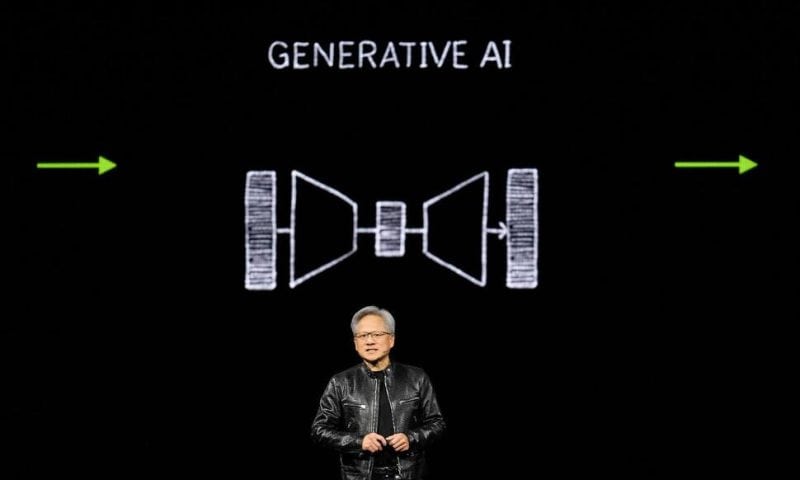Nvidia overshot Wall Street estimates as its quarterly profit skyrocketed, bolstered by the chipmaking dominance that has made the company an icon of the artificial intelligence boom
SAN FRANCISCO — Nvidia on Wednesday overshot Wall Street estimates as its profit skyrocketed, bolstered by the chipmaking dominance that has made the company an icon of the artificial intelligence boom.
Its net income rose more than sevenfold compared to a year earlier, jumping to $14.88 billion in its first quarter that ended April 28 from $2.04 billion a year earlier. Revenue more than tripled, rising to $26.04 billion from $7.19 billion in the previous year.
“The next industrial revolution has begun,” CEO Jensen Huang declared on a conference call with analysts. Huang predicted that the companies snapping up Nvidia chips will use them to build a new type of data centers he called “AI factories” designed to produce “a new commodity — artificial intelligence.”
Huang added that training AI models is becoming a faster process as they learn to become “multimodal” — that is, capable of understanding text, speech, images, video and 3-D data — and also “to reason and plan.”
The company reported earnings per share — adjusted to exclude one-time items — of $6.12, well above the $5.60 that Wall Street analysts had expected, according to FactSet. It also announced a 10-for-1 stock split, a move that it noted will make its shares more accessible to employees and investors.
And it increased its dividend to 10 cents a share from 4 cents.
Shares in Nvidia Corp. rose 6% in after-hours trading to $1,006.89. The stock has risen more than 200% in the past year.
The company, based in Santa Clara, California, carved out an early lead in the hardware and software needed to tailor its technology to AI applications, partly because founder and CEO Jensen Huang began to nudge the company into what was then seen as a still half-baked technology more than a decade ago. It also makes chips for gaming and cars.
The company now boasts the third highest market value on Wall Street, behind only Microsoft and Apple.
“Nvidia defies gravity again,” Jacob Bourne, an analyst with Emarketer, said of the quarterly report. While many tech companies are eager to reduce their dependence on Nvidia, which has achieved a level of hardware dominance in AI rivaling that of earlier computing pioneers such as Intel Corp., “they’re not quite there yet,” he added.
Demand for generative AI systems that can compose documents, make images and serve as increasingly lifelike personal assistants has fueled astronomical sales of Nvidia’s specialized AI chips over the past year. Tech giants Amazon, Google, Meta and Microsoft have all signaled they will need to spend more in coming months on the chips and data centers needed to train and operate their AI systems.
What happens after that could be another matter. Some analysts believe the breakneck race to build those huge data centers will eventually peak, potentially spelling trouble for Nvidia in the aftermath.
“The biggest question that remains is how long this runway is,” Third Bridge analyst Lucas Keh wrote in a research note. AI workloads in the cloud will eventually shift from training to inference, or the more everyday task of processing fresh data using already trained AI systems, he noted. And inference doesn’t require the level of power provided by Nvidia’s expensive top-of-the-line chips, which will open up market opportunities for chipmakers offering less powerful, but also less costly, alternatives.
When that happens, Keh wrote, “Nvidia’s dominant market share position will be tested.”

